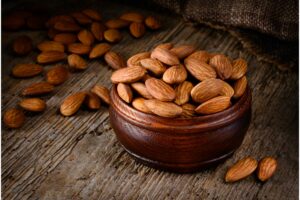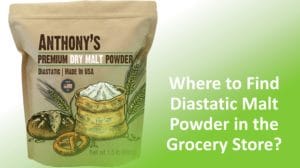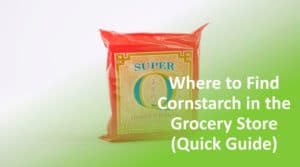Buttermilk is found in the refrigerated foods or dairy section of the grocery store. You can use buttermilk in many recipes, from chicken to biscuits to pancakes. Despite its name, it does not have butter in it.
Buttermilk used to be made of the cream left behind after churning butter, but these days, we get it from adding a bacteria culture to low-fat milk.
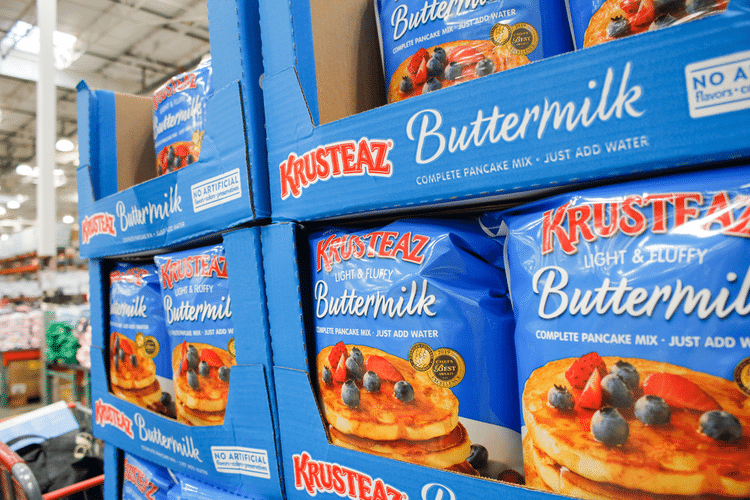
Where to Buy Buttermilk Near Me
Before you can find where the buttermilk is in the grocery store, you need to know which store you’re going to. Here’s a list of stores, both online and brick and mortar, where you can purchase buttermilk.
- Amazon
- Walmart
- Kroger
- Trader Joe’s
- Whole Foods
- Target
Once you choose where to go–if it’s not online– it may help you to look up the store’s layout online ahead of time. Almost every store will have its buttermilk in the dairy section.
Even though buttermilk has a more stable shelf life than regular milk, it is transported cold, so it has to stay cold.
You will usually find the dairy section along one of the outside walls at the back of the store. Dairy products need big fridges and freezers, which take up a lot of space.
It’s easier to conserve space and maintain the fridges and freezers from the back of the store.
One time, however, I found buttermilk at the front of the store with the produce. It was there because the grocery store had a featured local products section, and it was local.
What Are the Best Brands of Buttermilk to Buy?
Good buttermilk is tangy without being too sour and has a nice, thick consistency.
Here are some of the best brands of buttermilk to buy:
- Barber’s Dairy
- Five Acre Farms
- Kate’s Creamery
- Borden
- Hiland
- Organic Valley
- Garelick Farms
- Any locally made from a farmer’s market
Having high-quality buttermilk will positively impact the flavor and quality of whatever you’re cooking, so it’s worth it to find the best. Even more so if you like to drink it plain.
There are several styles of buttermilk. Almost every kind that you find at the store will be cultured buttermilk. That is made by adding special bacteria cultures to low-fat or nonfat milk.
Occasionally, you can find cultured buttermilk made from whole milk, too, which gives the milk an extra creamy texture. Five Acre Farms uses whole milk.
The other style is more traditional or true buttermilk. It’s made from the liquid byproduct of butter churning, which is where the name comes from. Kate’s Creamery makes this style.
It’s thinner and tastes less acidic than cultured buttermilk, and is the best kind if you can find it at your local grocery store or farmer’s market.
If you order online, you will most likely find it available in powder form. Although fresh buttermilk is better, the powdered kind works rather well in baking recipes.
The best powder buttermilk brands are King Arthur Flour and the Saco Pantry.
How to Store Buttermilk
Buttermilk should be stored in the fridge and kept under 40 degrees Fahrenheit. It helps if you do not store it in the door of the fridge because the temperature changes more there.
Buttermilk will stay good for about two weeks in the fridge. You can also freeze buttermilk and keep it for up to three months.
You can freeze it in its original container or separate it into smaller portions and freeze them. Just be sure there is room in the container for the milk to expand when it freezes.
If you have the powder buttermilk, it is best to store it in a sealed bag or an airtight container. It can turn cakey if it’s stored in a humid place. A cool and dry place will help it last up to a year.
Common Ways to Use Buttermilk
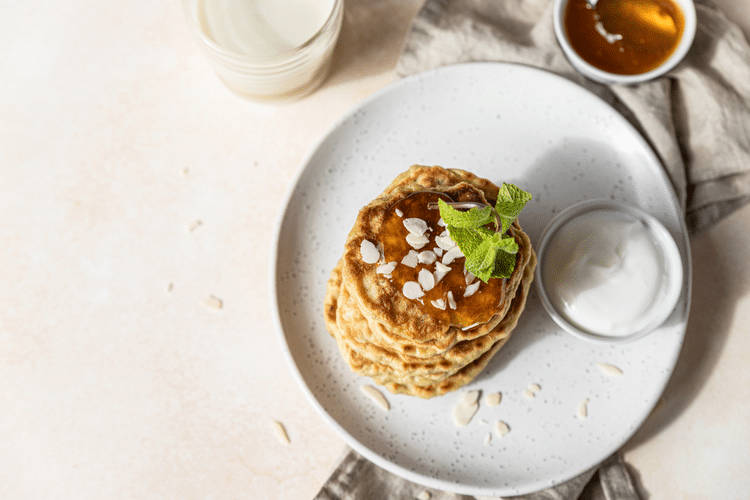
There are a lot of recipes that call for buttermilk. You can always substitute buttermilk for milk if you want to add a touch of richness to your meal.
- Pancakes or waffles
- Biscuits
- Muffins
- Cakes
- Fried chicken
- Soup
- Dressings
- Mashed potatoes
The key to using buttermilk as a substitute is understanding it. It’s more acidic than regular milk, has less fat than cream, and is thinner than yogurt.
If you keep these in mind and account for them in the recipe, you’ll be fine. It’s best to avoid subbing buttermilk into baking recipes because it’ll affect the chemistry, though.
What to Get Instead of Buttermilk
Here’s what you can get instead of buttermilk:
- Regular milk + lemon juice
Use a tablespoon of lemon juice for every cup of milk. Mix them and let them sit for at least five minutes before adding. Use as a 1:1 replacement.
- Regular milk + white vinegar
If you don’t have lemon juice on hand, use a tablespoon of white vinegar for every cup of milk. Stir together and let sit for at least five minutes. Use as a 1:1 replacement.
- Plain yogurt + milk
Yogurt is tangy like buttermilk, so it matches in flavor. It is thicker, though, so you’ll need to cut it with some milk. Use the mixture as a 1:1 substitute.
- Kefir, unflavored and unsweetened
Kefir is another fermented milk product, matching buttermilk in taste and consistency. You can use it as a 1:1 replacement.
- Heavy cream
Heavy cream works as a 1:1 substitute for buttermilk, as long as you aren’t using a recipe that calls for baking soda. Heavy cream doesn’t react with it.
You can still use heavy cream, but you’ll also need to change the baking soda out for baking powder.
- Soy or almond milk + lemon juice or white vinegar
Not every alternative milk will thicken when the juice or vinegar is added. Soy and almond will be your best options. Be sure to buy unsweetened and unflavored milk.
What you want to make may affect which substitute you choose.
If you want to make fried chicken, you’ll want to choose a substitute close in flavor, like the yogurt with milk or some heavy cream.
If you’re baking, you’ll want to take into consideration how the ingredients will affect each other. The acidity of buttermilk helps baking soda rise, so you’ll want to use the milk and lemon juice.


